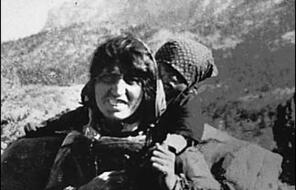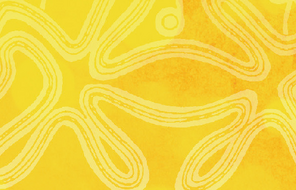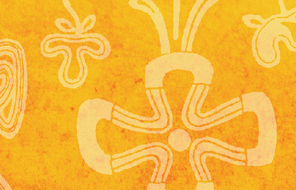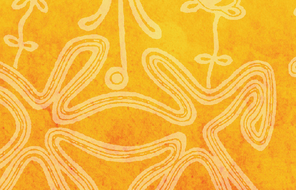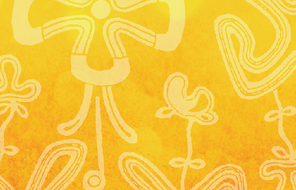Psychic Numbing and Genocide
At a Glance
Language
English — USSubject
- Civics & Citizenship
- Genocide
The following excerpt is from the abstract (summary) of a research paper written by Dr. Paul Slovic, professor of psychology at the University of Oregon. It was published in the academic journal Judgment and Decision Making (April 2007).
Most people are caring and will exert great effort to rescue individual victims whose needy plight comes to their attention. These same good people, however, often become numbly indifferent to the plight of individuals who are "one of many" in a much greater problem. Why does this occur? The answer to this question will help us answer a related question that is the topic of this paper: Why, over the past century, have good people repeatedly ignored mass murder and genocide?...
My search to identify a fundamental deficiency in human psychology that causes us to ignore mass murder and genocide has led to a theoretical framework that describes the importance of emotions and feelings in guiding decision making and behavior. Perhaps the most basic form of feeling is affect, the sense (not necessarily conscious) that something is good or bad. Affective responses occur rapidly and automatically—note how quickly you sense the feelings associated with the word "treasure" or the word "hate." . . . One last important psychological element in this story is attention. Just as feelings are necessary for motivating helping, attention is necessary for feelings.
The behavioral theories and data confirm what keen observers of human behavior have long known. Numerical representations of human lives do not necessarily convey the importance of those lives. . . . The numbers are important, and yet they are not everything. For whatever reasons, images often strike us more powerfully, more deeply than numbers. We seem unable to hold the emotions aroused by numbers for nearly as long as those of images. We quickly grow numb to the facts and the math. Images seem to be the key to conveying affect and meaning, though some imagery is more powerful than others. (see Figure 1)
Probably the most important image to represent a human life is that of a single human face. Journalist Paul Neville writes about the need to probe beneath the statistics of joblessness, homelessness, mental illness, and poverty in his home state of Oregon, in order to discover the people behind the numbers—who they are, what they look like, how they sound, what they feel, what hopes and fears they harbor. He concludes: "I don't know when we became a nation of statistics. But I know that the path to becoming a nation—and a community—of people is remembering the faces behind the numbers" (Neville, 2004). . . .
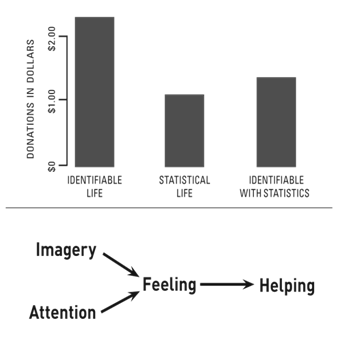
According to Dr. Paul Slovic, professor of psychology at the University of Oregon, people are a lot more likely to respond to imagery of people suffering than to respond to a high number of people suffering. An image of an individual in need will garner more donations than an individual who represents a large group of people in need, or just the large group on its own.
Perhaps there is hope that vivid, personalized media coverage of genocide could motivate intervention. Perhaps. But again we should look to research to assess these possibilities. Numerous experiments have demonstrated the "identifiable victim effect" which is also so evident outside the laboratory. . . . Small, Loewenstein, and Slovic (2007) gave people leaving a psychological experiment the opportunity to contribute up to $5 of their earnings to Save the Children. The study consisted of three separate conditions: (1) identifiable victim [image], (2) statistical victims [facts], and (3) identifiable victim with statistical information [image + facts]. . . . Participants in each condition were told that "any money donated will go toward relieving the severe food crisis in southern Africa and Ethiopia." The donations in fact went to Save the Children, but they were earmarked specifically for Rokia in Conditions 1 and 3 and not specifically earmarked in Condition 2. The average donations are presented in Figure 2 below. Donations in response to the identified individual, Rokia, were far greater than donations in response to the statistical portrayal of the food crisis. Most important, however, and most discouraging, was the fact that coupling the statistical realities with Rokia's story significantly reduced the contributions to Rokia. . . . (see Figure 2)
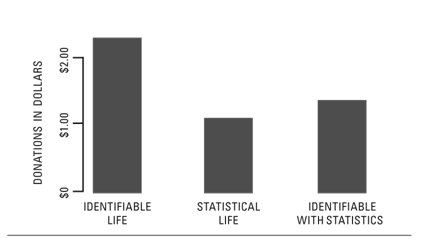
An image of an individual in need will garner more donations than an individual who represents a large group of people in need, or just the large group on its own.
Clearly there are political obstacles posing challenges to those who would consider intervention in genocide, and physical risks as well. What I have tried to describe in this paper are the formidable psychological obstacles centered around the difficulties in wrapping our minds around genocide and forming the emotional connections to its victims that are necessary to motivate us to overcome these other obstacles. . . . In this paper I have drawn upon common observation and behavioral research to argue that we cannot depend only upon our moral feelings to motivate us to take proper actions against genocide. That places the burden of response squarely upon the shoulders of moral argument and international law.
Source: Paul Slovic, "If I Look at the Mass I Will Never Act: Psychic Numbing and Genocide,"Judgement and Decision Making, no. 2 (April 2007).



